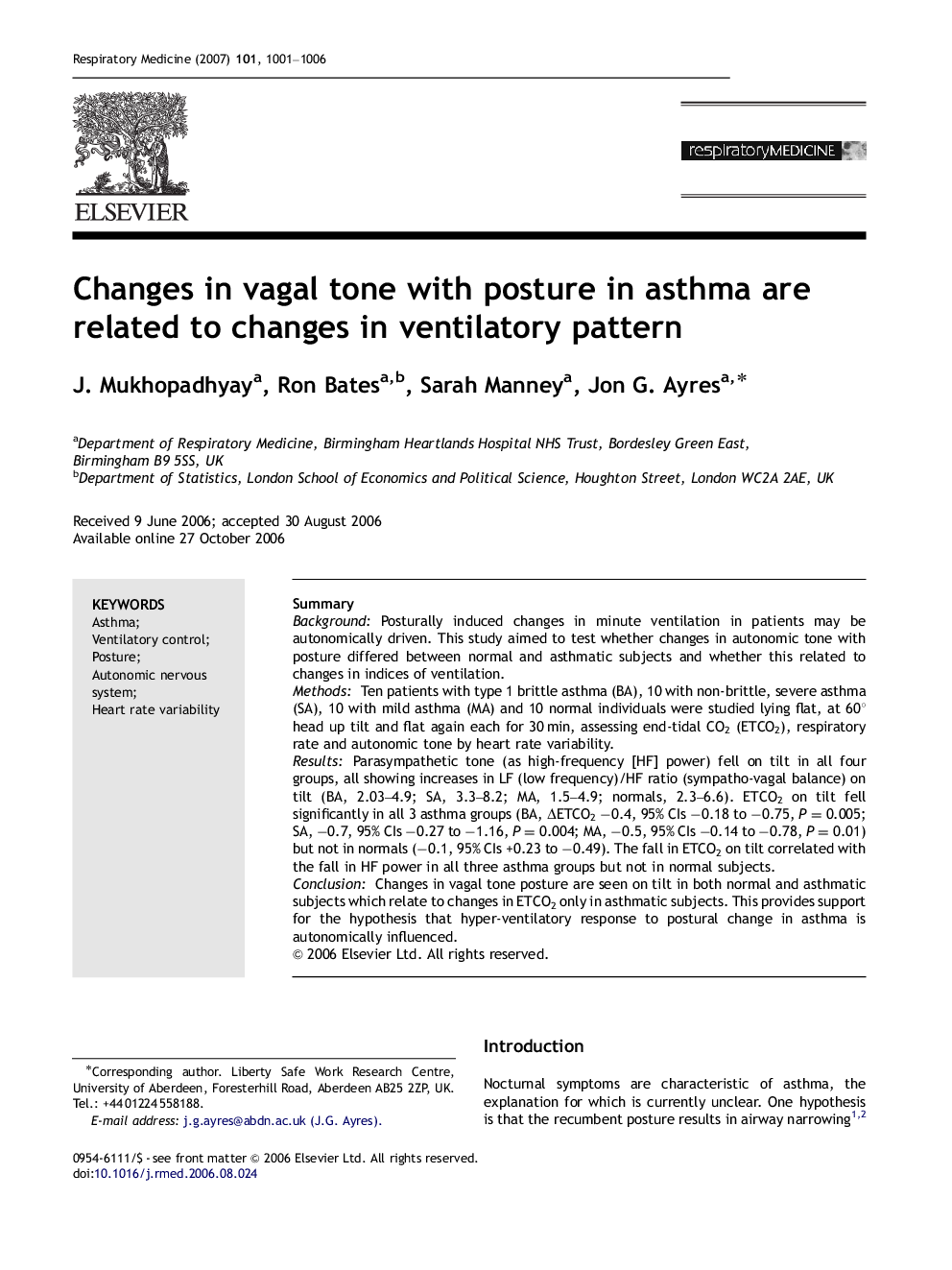| Article ID | Journal | Published Year | Pages | File Type |
|---|---|---|---|---|
| 4211877 | Respiratory Medicine | 2007 | 6 Pages |
SummaryBackgroundPosturally induced changes in minute ventilation in patients may be autonomically driven. This study aimed to test whether changes in autonomic tone with posture differed between normal and asthmatic subjects and whether this related to changes in indices of ventilation.MethodsTen patients with type 1 brittle asthma (BA), 10 with non-brittle, severe asthma (SA), 10 with mild asthma (MA) and 10 normal individuals were studied lying flat, at 60° head up tilt and flat again each for 30 min, assessing end-tidal CO2 (ETCO2), respiratory rate and autonomic tone by heart rate variability.ResultsParasympathetic tone (as high-frequency [HF] power) fell on tilt in all four groups, all showing increases in LF (low frequency)/HF ratio (sympatho-vagal balance) on tilt (BA, 2.03–4.9; SA, 3.3–8.2; MA, 1.5–4.9; normals, 2.3–6.6). ETCO2 on tilt fell significantly in all 3 asthma groups (BA, ΔETCO2 −0.4, 95% CIs −0.18 to −0.75, P=0.005; SA, −0.7, 95% CIs −0.27 to −1.16, P=0.004; MA, −0.5, 95% CIs −0.14 to −0.78, P=0.01) but not in normals (−0.1, 95% CIs +0.23 to −0.49). The fall in ETCO2 on tilt correlated with the fall in HF power in all three asthma groups but not in normal subjects.ConclusionChanges in vagal tone posture are seen on tilt in both normal and asthmatic subjects which relate to changes in ETCO2 only in asthmatic subjects. This provides support for the hypothesis that hyper-ventilatory response to postural change in asthma is autonomically influenced.
